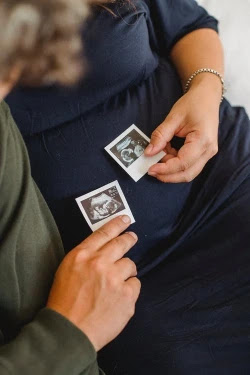How many Embryos are made in an IVF?
Transferring the Embryos inside the uterus of a woman is itself a big task and a crucial part of the IVF procedure. In the US, on an annual basis, almost 1.5% of the babies take place via ART - Assisted Reproductive Technologies therapies. The entire process of an IVF can be highly exhausting and among all, grading is one of them.
On average, 60 to 80% of the mature eggs fertilizes, immature eggs cannot be injected inside the women's uterus as this won't lead to fertility even after completing an IVF process.
The in-depth article below will help you gather knowledge and awareness of the Embryos developed during an IVF process.
How many embryos are formed & transferred?
According to the International Journal of Gynaecology and Obstetrics, the total number of embryos formed and transferred varies according to multiple factors. Women's age and other factors play a vital role in deciding this.
- Transfer of only 1 embryo is considered the ideal number for women under the age of 35 years.
- For women more than 35+ years, the transfer of 2 embryos can take place.
- A heavy load transfer is used in women having lower chances of pregnancy. Here, 3 or more embryos were transferred.
According to the Fertility and Sterility, only 1 embryo transfer in a women's uterus helps them to reduce the risk factor of having multiple births. It is one of the most important pieces of research that I would like to bring to your notice. It is because doctors generally transfer more than 3 embryos to ensure that pregnancy is Sureshot happening. But this research states that 1 quality embryo formation is enough to get pregnant.
Early Embryo Growth: Day 2, Day 3 & Day 4
Understanding the concept of how the embryo takes place and how much is formed or needed is a vital point to keep in mind before going for an IVF treatment.
Day 2: On the second day of your IVF treatment, the embryos ideally start to grow. It then divides to build an embryo which is basically of 2 cells to 4 cells. On the second day, the cycle goes further and the advancement happens. Your embryos start growing from 1 cell on the first day of fertilization to 2 to 4 cells on the second day. Apart from this, the embryos generally receive a grade. This grade usually varies from 1 to 5. Here, to be more particular, - Grade 1 refers to the best quality of an embryo.
On the other hand - grade 2 refers to the worst quality of an embryo. Although the entire functioning and future of these embryos can't be divided based on the grade. Yet, it is only used to describe the current quality. All of these embryos irrespective of their grades are kept securely. This is done because many times the embryo having the grade 4 can be used to form a blastocyst.
Day 3: On the 3rd day, the embryos are expected to have been divided into even more cells. From 2 to 4 cells on day 2, it further forms 6 to 8 cells. It receives the grading starting from 1 to 5. Till the time, embryos grading is between 1 to 3, there is no matter of worry. The ones falling between 4 to 5 grading are kept under surveillance to check if they start working in some days.
Day 4: In this stage, later, you will witness a morula getting formed. Here, a big range of embryo formation can be glimpsed. On the 4th day, the embryos are further expected to grow in cells by 7 to 10 cells. Here, all the cells can seem to come together leading to the formation of a ball. The ball is big enough, such that bifurcation of the individual cells becomes a point of the question and difficult at the same time.
In this step, many complex alterations take place. These changes make it obvious to lose some good quality embryos which are between 3 to 5 grading. Here, only those cells move further to form the morula which is highly strong in their offerings. You get notified by an embryologist about the embryo's progress and development. You will have the checkup scheduled if there is a fresh embryo transfer.
Day 5: On the 5th day, the majority of your embryos will start forming the blastocyst. Only 40 to 55% of the embryos reach this stage. Before the transfer of an embryo takes place, you will be intimidated regarding the quality of the formed embryo and about its further advancement. After the fresh transfer of the embryo is started, then within 2 to 3 days, your embryologists will send you the message regarding this. Since the case of every patient is going to be different, so there isn't a standard number to say that how many embryos will be formed during an IVF. It can be between 7 to 15.
Eventually, not every embryo is going to work well and isn't going to be of the best quality. Here, the best embryos formed earlier that fall between 1 to 3 grading are chosen for further transfer. The remaining ones are left for some time. In women, based on this factor the blastocyst formed will eventually vary according to your case. In general, Metabolomic profiling is used for choosing the best eggs to form the embryos.
Key Takeaways
The formation of an embryo is a major part of the IVF process. It can be exhausting taking care of so many things for making an embryo process a big success. The good number of embryos for an IVF depends on the women, as the case might vary for all. You need to be up to your toes to go according to the advice provided by the doctors out there for the success of an IVF process.
References

